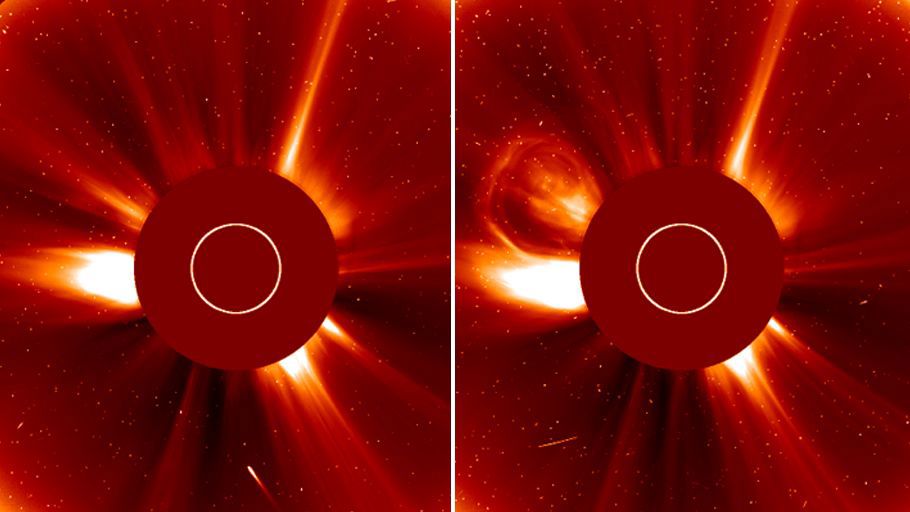
A comet nicknamed the “Halloween comet” disintegrated during its closest approach of the sun, and the European Space Agency and NASA’s Solar and Heliospheric Observatory mission captured footage of its final moments.
Astronomers first discovered Comet C/2024 S1 (ATLAS) on September 27 via an Asteroid Terrestrial-impact Last Alert System in Hawaii, and the glowing celestial body quickly earned its nickname following speculation that it might be visible in the night sky near the end of the month. But as the comet, composed of ice, frozen gases and rock, came closer to its perihelion — the nearest point to the sun in its orbit — over the past few days, it broke apart into chunks until it finally evaporated, according to NASA.
C/2024 S1 was a sungrazer, a comet that passes within a distance of about 1,367,942 kilometres) from the sun. Sungrazers often vaporize due to the intense, hot solar atmosphere.
“Comets are really hard to predict, and sungrazing comets like this are even harder than most. At discovery time, astronomers were somewhat divided on whether it would survive or not, which just speaks to that uncertainty,” said Karl Battams, a computational scientist based at the Naval Research Laboratory in Washington, DC. Battams is also principal investigator for the Large Angle and Spectrometric Coronagraph instrument suite, a set of three telescopes on the Solar and Heliospheric Observatory, or SOHO, spacecraft that image the sun’s atmosphere.
The comet reached its perihelion on Monday at 7:30 a.m. ET and was completely vaporized after passing within 1% of Earth’s distance from the sun, less than 1 million miles (1.5 million kilometers) away from the star, according to NASA. In comparison, comet C/2023 A3 Tsuchinshan–ATLAS, a comet from the Oort Cloud that survived its perihelion on September 27, did not get closer to the sun than a third of Earth’s distance from the star. (Our planet is about 149 million kilometers, away from the sun.)
“Statistically, it’s extremely rare for sungrazing comets to survive (as they fly) past the Sun,” Battams told CNN in an email. NASA’s Sungrazer Project, a citizen science project that discovers previously unknown comets, which Battam is the lead for, has discovered more than 4000 sungrazing comets and none have survived their perihelion, he added.
A handful of larger sungrazing comets have been observed surviving their close pass by the sun, such as comet C/2011 W3 Lovejoy in 2011. Initially discovered using a ground telescope, C/2011 W3 Lovejoy was the brightest sungrazing comet that SOHO has imaged, but these larger comets are “few and far in between,” Battams said.
links to content on ABC
9News





